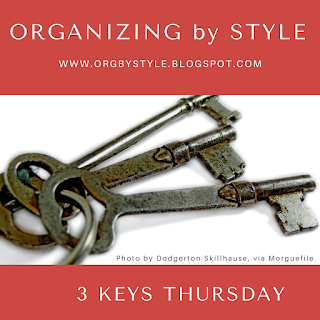No matter the cause, you somehow seem to have acquired a plethora of planners and calendars.
Well, have no fear. There's more than one way to press a planner into service.
There's the traditional use, of course -- keeping track of appointments. If you use just one planner and/or calendar, that might still leave you with a small pile of extras. You could:
Use one to keep track of your progress. Perhaps you set a goal to drink more water, take more steps, or read more books. Jotting down your accomplishment of the day in the designated box can help you stay on track. Better yet, it can help you see the big picture (and your successes) on days when things aren't going so well.
Use one to log time spent on your favorite hobby. When it comes to my writing, this has become so important that I don't wait to see if I have an extra planner on hand. I buy one for this purpose. The one I use now is from the dollar store and gives me space to log my time as well as jot a few notes to myself: what I did, and where I want to start in my next session, for example.
Planning a long-term project. One of my friends gave me a beautiful planner that I use to plan writing projects. While the daily (favorite hobby) planner focuses on the day-to-day and keeps me accountable, this larger planner with tons of open space and BIG blocks lets me do the global planning. When I can give each chapter, character, or concept a full-page spread of its own, I feel less constrained and better able to brainstorm.
Categorized lists. Cross out the month and replace them with a category. I used the monthly layout at the front of my goals planner to keep and track a running list of books I've read, organizing projects I want to do, and 22 things I want to focus on in 2022. (I also used one page to list all the good things in 2021). The page devoted to organizing projects is both a work-in-progress (I add to it as new projects pop up) and a way to keep track (I put a date in the corresponding box every time I work on a project). Because each project gets its own box, I can see the big picture without trying to cram everything onto one list. Depending on your styles, this might not matter to you but, as someone with an I need to see it personal style, once I started doing this, I wondered why it took me so long to try this approach.
A penny (or square) for your thoughts. Or prayer requests. Or anything else you want to get out of your head and onto the page before it floats away. Again, for someone like me with an I need to see it personal style, giving each item its own square keeps things visible in a way that's less overwhelming than a traditional list.
You're probably wondering why this counts as a frequently asked question. You might have guessed (correctly) that I don't have a lot of people asking me what to do with an overabundance of planners. But deciding what to do with an overabundance of anything is an integral part of getting (and staying) organized. Sometimes it's easy. We can look at an item and determine we don't need it or we'll never use/wear it again and we can toss/recycle/donate it accordingly. Or, we can decide we simply don't have the space for something, and decide to give it a new home either through donation or resale.
But a lot of times, it's not so easy. And when something we like and want to keep can honestly be pressed into service in a new and useful way, that can be a win-win. Not only are we getting to keep the thing we like, we're reducing waste by pressing an already manufactured item into service.
There's one final style caveat to consider. If the thing you love is a poor fit for your styles, it might be better off brightening up someone else's space. My primary personal style is I need to see it but, when it comes to stationery items, I definitely have a generous dollop of I love stuff, which makes me more likely to find 1000 excuses to keep all things stationery. But, because planners are an excellent I need to see it tool, it makes sense for me to hang on to them and press them into service in a new way if the planning space is generous enough. Those little year-on-a-page and pocket-sized planners? Not keepers.
So, if you've been staring down that pile of planners and calendars taking up space in your kitchen or office, take a moment and look at them through the lenses of your styles. What abstract ideas or looming projects can they help you organize? How can they help you keep track of your successes and your small steps? What thoughts, dreams, goals and ideas might benefit from being corralled into a collection of 365+ squares separated into 12 months or categories?
And, if the answer is, "they can't," then perhaps the best home for them is the recycling bin. With a clear conscience.




